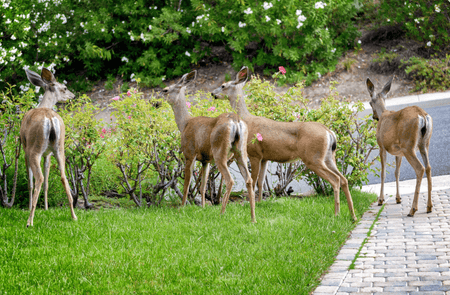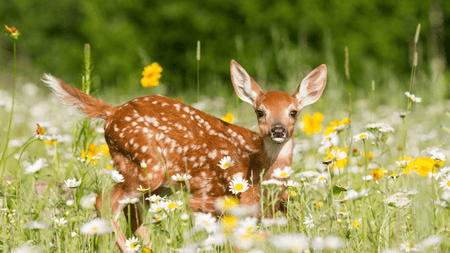Shady Sanctuaries Native Plant Collection: Lush Landscapes for Low Light

Are you ready to transform your outdoor space into a haven for both yourself and local wildlife, but fear your yard lacks the necessary sunshine for your garden to flourish? Look no further than our Shady Sanctuaries collection. These native perennials are designed to thrive even with minimal sunlight, bringing beauty and biodiversity to your garden throughout three seasons.

What does “shade” even mean? Understanding the terminology of native plants & sunlight
When shopping for plants, you'll often see labels indicating how much sun the plant needs. The options are usually full sun, part sun, part shade, or full shade. But what do those terms actually mean? Here's the quick answer:
Full sun: These plants will usually need at least six hours of direct sunlight.
Part sun: Plants labeled as part sun will require between three to six hours of sunlight every day.
Part shade: These plants will also need between three to six hours of sunlight per day but will also need to be protected from more intense sunlight at midday.
Full shade: As you’d expect, these plants will generally need fewer than three hours of direct sunlight a day.
Native Plants for Shade or Low Sunlight Areas
The Shady Sanctuaries collection is your ticket to creating a wildlife habitat garden that requires minimal sunlight. These native perennials boast the ability to bloom across three seasons: this extended blooming period ensures that your garden remains a colorful and lively haven throughout the year, providing a continuous display of beauty. The collection offers a diverse range of plant sizes, ensuring that you can create dynamic landscapes. From the compact and delicate Wild Geranium to pollinator magnet Spotted Joe Pye Weed, you have the flexibility to design your garden with varying heights and spreads, adding depth and visual interest.
Best of all, these plants create a welcoming environment for essential pollinating species, contributing to the overall health of your garden and the biosphere at large.
Blue Wood Aster (Symphyotrichum cordifolium)
Blue Wood Aster is a perennial that holds a special place within the Shady Sanctuaries collection. With a height ranging from 2 to 4 feet and a spread of 1.5 to 2 feet, the Blue Wood Aster fills in with its graceful appearance. Its slender stems are adorned with heart-shaped leaves, adding a touch of charm to your garden landscape.
Thriving in well-drained soil and partial to full shade, this perennial demonstrates resilience and adaptability. Its ability to flourish with minimal care makes it an excellent choice for both seasoned gardeners and those new to the joys of gardening. Whether planted in clusters, borders, or mixed perennial beds, the Blue Wood Aster adapts seamlessly to various garden settings. Its versatility allows you to experiment with different garden designs, creating dynamic and visually interesting landscapes.
Beyond its visual appeal, the Blue Wood Aster plays a crucial role in enhancing biodiversity. By providing nectar and habitat for a diverse range of pollinators, it actively contributes to the ecological balance of your garden, fostering a harmonious coexistence between plants and wildlife.
- Height: 2-4 feet
- Spread: 1.5-2 feet
- Blooms: June-November
- Attracts: Butterflies, Caterpillars, Native Bees, Pollen Specialist Bees, Bumblebees, Birds, Hummingbirds, Beneficial Insects
Wild Geranium (Geranium maculatum)
The Wild Geranium graces your garden with a burst of color from April to June, making it a springtime delight. As other plants are beginning to awaken, the Wild Geranium takes center stage, creating a visually enchanting scene that signals the arrival of the growing season. Standing at a modest height of 1 to 2 feet with a spread of 1 to 1.5 feet, the Wild Geranium’s five-petaled flowers in shades of lavender and pink add a touch of understated elegance to any garden setting.
This geranium variety is a beacon for pollinators, including butterflies, caterpillars, native bees, pollen specialist bees, and birds. Its nectar-rich blooms provide sustenance for these essential creatures, turning your garden into a thriving ecosystem where biodiversity flourishes. Beyond its appeal to pollinators, the Wild Geranium offers habitat and shelter for various wildlife species, especially in spring, before other plants emerge. Birds, in particular, may find the plant's structure a welcoming refuge, contributing to the overall ecological balance within your garden.
- Height: 1-2 feet
- Spread: 1-1.5 feet
- Blooms: April-June
- Attracts: Butterflies, Caterpillars, Native Bees, Pollen Specialist Bees, Birds
Spotted Joe Pye Weed (Eutrochium maculatum)
Within the Shady Sanctuaries collection, the Spotted Joe Pye Weed stands tall as a majestic and ecologically significant perennial. Commanding attention with heights ranging from 2 to 6 feet and a spread of 4 to 5 feet, this plant adds vertical interest, creating a striking visual impact that enhances the overall landscape. Its late-season flowering period (August – October) ensures that your outdoor space remains vibrant and colorful well into the cooler months. The sweet fragrance of its blooms enhances the overall garden experience, creating an inviting and immersive atmosphere.
As a native perennial, Spotted Joe Pye Weed is well adapted to local climates and soil conditions. Its resilience makes it an excellent choice for sustainable gardening, requiring minimal intervention while contributing to the health and biodiversity of your garden. It is a magnet for various pollinators, including bees and butterflies. Its nectar-rich flowers provide sustenance for these essential creatures, fostering a dynamic and bustling ecosystem in your garden.
- Height: 2-6 feet
- Spread: 4-5 feet
- Blooms: August-October
- Attracts: Bees, Birds, Butterflies
The Shady Sanctuaries collection goes beyond being a mere assortment of plants; it's a carefully curated selection that brings beauty, biodiversity, and ecological balance to your garden. With their adaptability, extended blooming periods, and appeal to a wide range of pollinators, these plants create a sanctuary not only for you but for the flourishing wildlife in your surroundings.
Tips for Low Sunlight Native Plant Wildlife Habitats
Native plants are well-adapted to the local climate and environmental conditions, which often makes them more resilient and easier to grow. If you're dealing with a low-light area, there are still many native plants that can thrive. Here are some tips for choosing and caring for native plants in low sunlight areas:
Understand Your Site Conditions: Evaluate the amount of sunlight your site receives. Low-light areas may get only a few hours of direct sunlight or may be shaded by buildings, trees, or other structures.
Select Shade-Tolerant Natives: Choose native plants that are naturally adapted to lower light conditions. Many native woodland plants, for example, are adapted to thrive in the dappled sunlight that filters through tree canopies.
Mulch and Watering: Apply a layer of mulch around your plants to help retain moisture, as lower light areas may not dry out as quickly. Watering needs will depend on the specific plants, but many native shade plants prefer consistently moist soil. Leave the leaves in fall as mulch for overwintering wildlife.
Diversify Plantings: Create a diverse planting scheme with different species and heights to mimic natural ecosystems. This can create interest and provide habitat for a variety of wildlife.
Prune or Thin: If possible, selectively prune or thin surrounding trees or shrubs to allow more light to reach the plants. Be cautious not to harm the existing ecosystem balance.
Regularly Monitor and Adapt: Keep an eye on your plants and adjust care as needed. If a plant doesn't seem to be thriving, consider moving it to a better-suited location.
Remember that even shade-loving plants need some sunlight, so make sure to choose plants that are suitable for the specific light levels in your area. Use our Plant Sunlight Guide or Native Plant Finder for more options and info.

Find Native Plants by Zip Code
We took the guesswork out of planting native. Check your zip to see what ships!




















